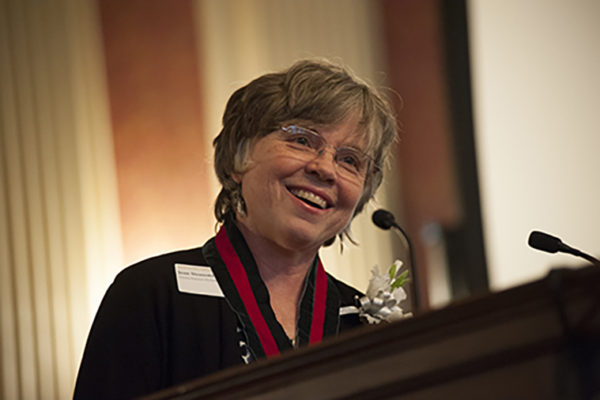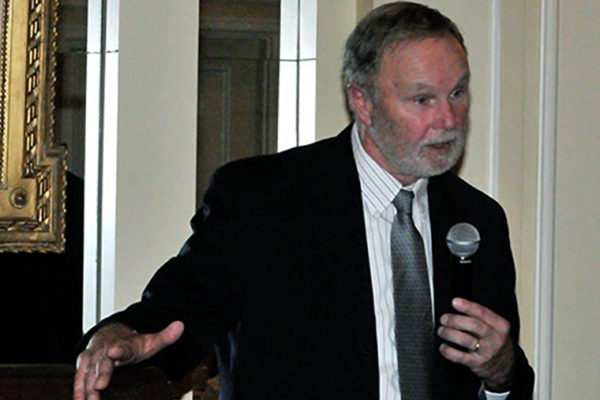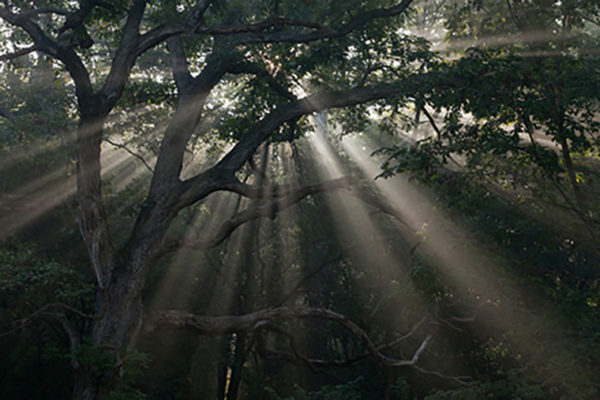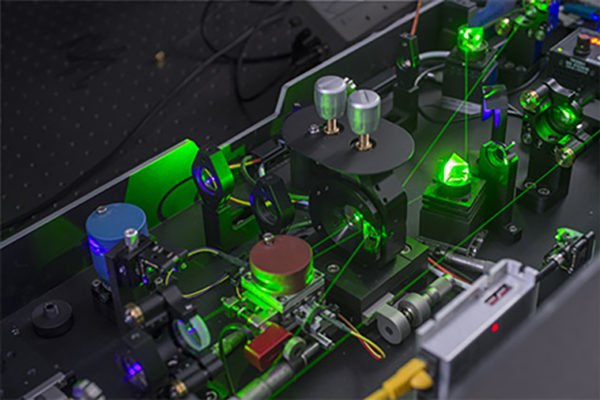WUSTL named Tree Campus for fourth year
Washington University in St. Louis is a Tree Campus USA
for the fourth year in a row, the Arbor Day Foundation recently
announced. Tree Campus USA is a national program created in 2008
to honor colleges and universities for effective campus forest
management and for engaging staff and students in conservation goals.
Strassmann installed as Charles Rebstock Professor of Biology
Biologist Joan E. Strassmann, PhD, was installed Jan. 23 as the Charles Rebstock Professor of Biology in Arts & Sciences in a ceremony in Holmes Lounge. Following the formal installation, Strassmann gave an entertaining talk about a high-stakes gamble she and Queller made 15 years ago: to switch from studying cooperation and conflict in social insects, famous for their complex societal arrangements, to studying it in an amoeba, whose claim to fame had been its simple lifestyle.
Daydreaming about summer excursions?
Along the Missouri River between St. Louis and Hermann, a restored German
settlement, is an enchanted valley blessed by
low-density land use where people grow North American grapes for
Missouri wine, groundcover in interlocking trays for green roofs,
vegetables for St. Louis locivore restaurants and native trees for
environmentally conscious landscapers. WUSTL readers will recognize many of the contributers to Missouri River Country, a book that celebrates this land and the people who have lived there. All proceeds from the book’s sales will go to land conservation.
Happy 10th anniversary Opportunity!
Ten years ago, on Jan. 24, 2004, the Opportunity rover landed on a flat plain in the southern highlands of the planet Mars and rolled into an impact crater scientists didn’t even know existed. In honor of the rover’s 10th anniversary, Ray Arvidson, PhD, deputy principal investigator of the rover mission, recently took an audience on a whirlwind tour of the rover’s decade-long adventures and discoveries.
NASA’s Opportunity at 10: new findings from old rover
In the Jan. 24 edition of the journal Science, Ray Arvidson, PhD, a professor at Washington University in St. Louis and deputy principal investigator of the MER mission to Mars, writes in detail about the discoveries made by the Opportunity rover and how these discoveries have shaped our knowledge of the planet.
Microbes buy low and sell high
Microbes set up their own markets, comparing bids for commodities, hoarding to obtain a better price, and generally behaving in ways more commonly associated with Wall Street than the microscopic world. This has led an international team of scientists, including two from Washington University in St. Louis, to ask which, if any, market features are specific to cognitive agents.
Odor receptors discovered in lungs
Your nose is not the only organ in your body that can sense cigarette smoke wafting through the air. Scientists at Washington University in St. Louis have shown that your lungs have odor receptors as well. The odor receptors in your lungs are in
the membranes of flask-shaped neuroendocrine cells that dump neurotransmitters and neuropeptides when the receptors are stimulated, perhaps triggering you to cough to rid your body of the offending substance.
The holidays come early for WUSTL scientists
A large wooden crate was delivered to the Compton Hall loading dock last week, direct from Paris. The crate contained a fabulous new instrument that WUSTL scientists say will transform their ability to approach problems in geology, biology, space science, engineering and materials science with new precision. Called the Cameca SIMS ims7f-geo, it is a state-of-the-art secondary ion mass spectrometer, one of only three in the world.
Tyson designated an Earth Observatory
A 60-acre plot in Washington University in St. Louis’ Tyson Research Center has been named a Forest Global Earth Observatory, or ForestGEO. The oak-hickory forest in the rolling foothills of the Ozarks joins a network of 51 long-term forest study sites in 23 countries, including eight others in the United States. Together, the forests, containing roughly 8,500 species and 4.5 million individual trees, comprise the largest, systematically studied network of forest-ecology plots in the world.
Scientists stitch up photosynthetic megacomplex
In Science, scientists at Washington
University in St. Louis report on a new technique that allowed them to extract a photosynthetic megacomplex consisting of a light antenna and two reaction centers from the membrane of a cyanobacterium. This is the first time an entire complex has been isolated and studied as a functioning whole.
View More Stories






